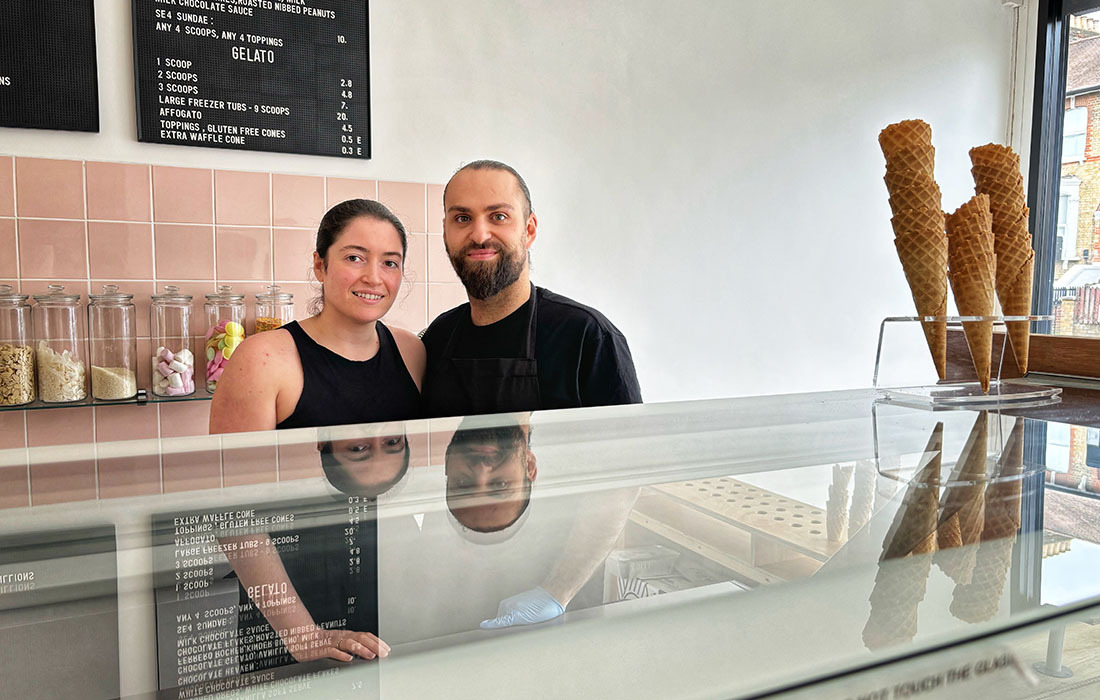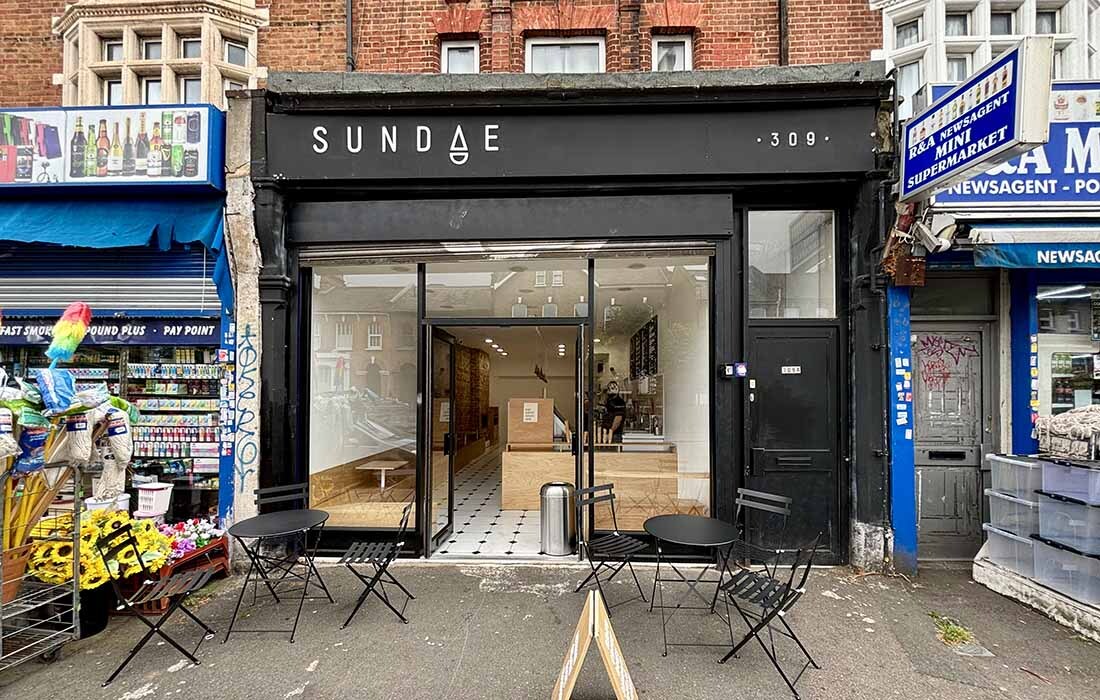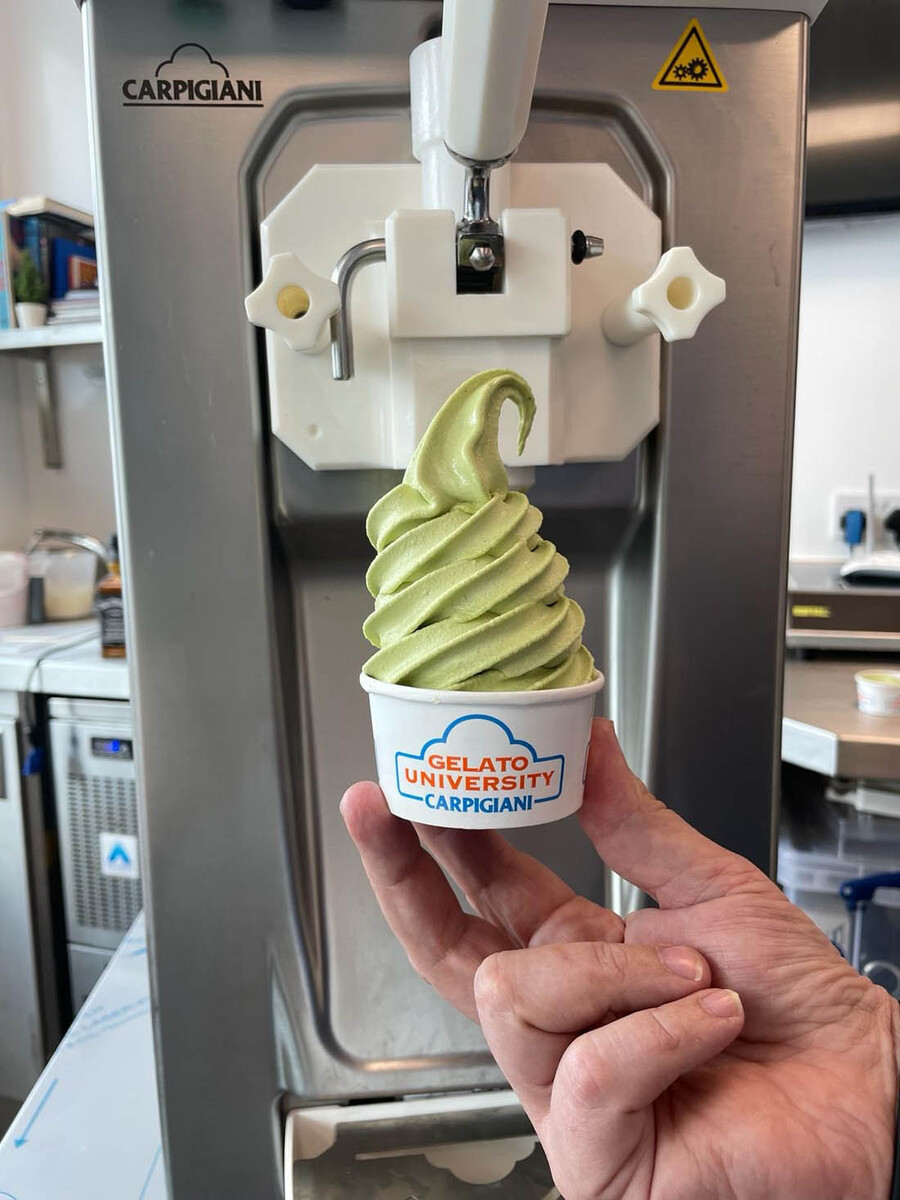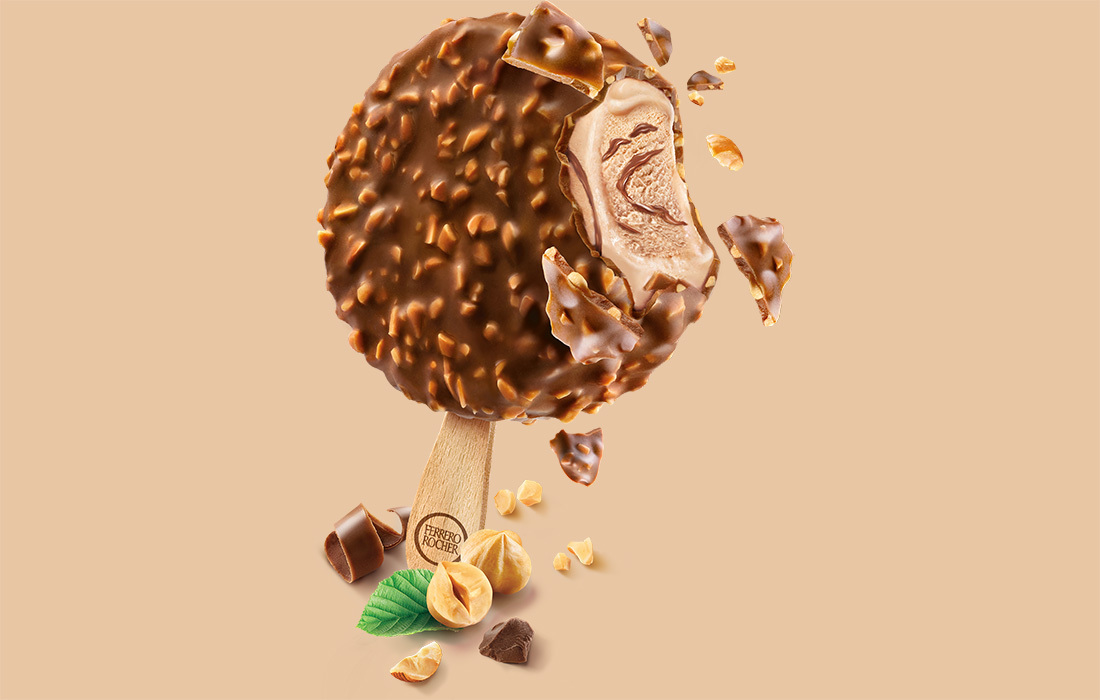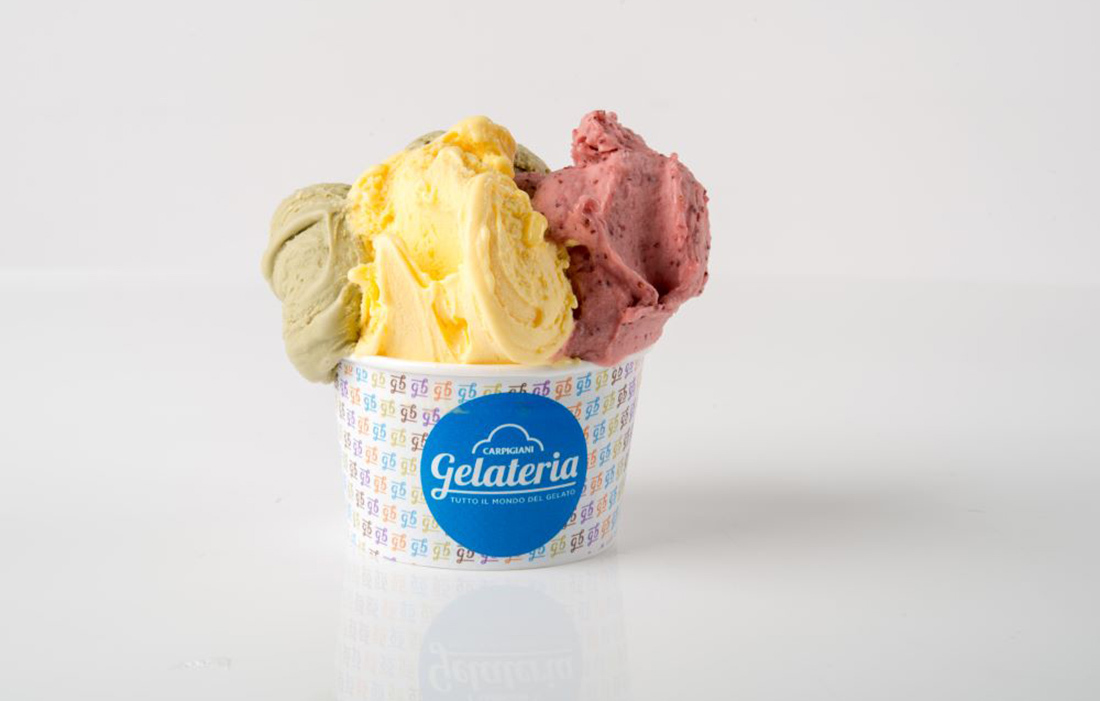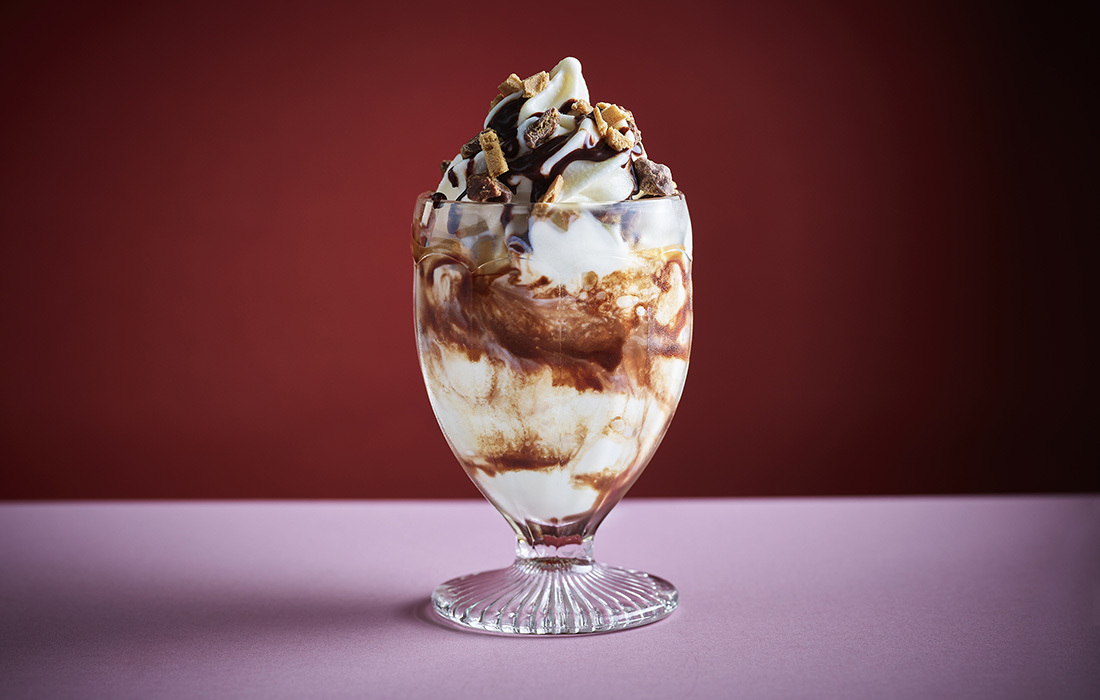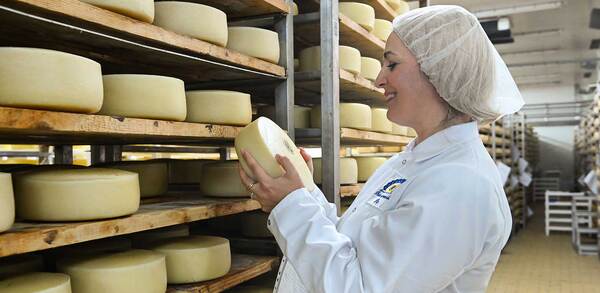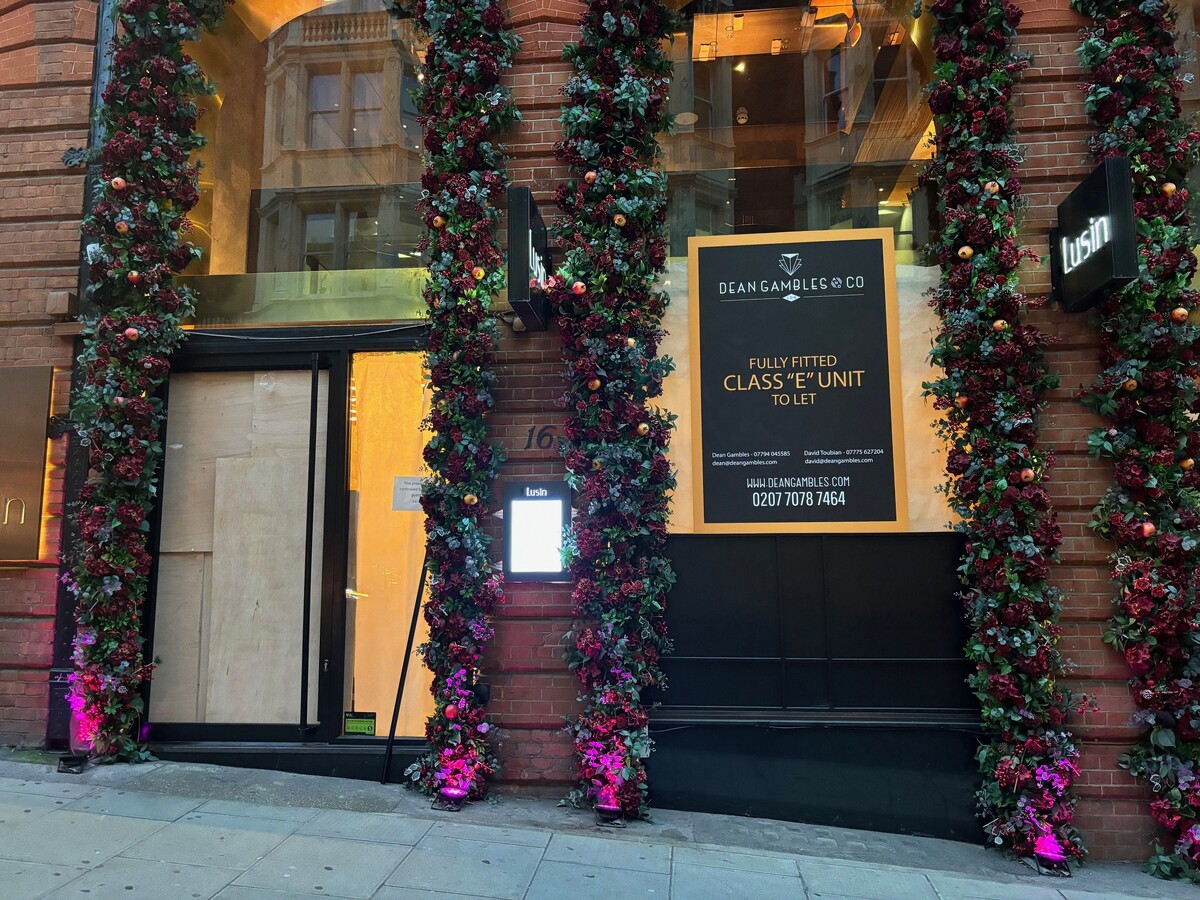How unique ice-cream flavours can enhance customer loyalty
Serving quality, quirky frozen desserts is the key for hospitality operators in the quest to maximise sales, writes Will Hawkes.
Two children are staring intently into the glass-fronted fridge at Sundae, an ice-cream parlour in Brockley, south London. The younger child, a boy, can’t decide. Bekir Barbaros, co-owner, suggests dark chocolate. “Oh,” their mum says, anxious to avoid that most perilous of parental pitfalls, the unloved ice-cream. “I’m not sure; can he try it?” Of course. He tries it, he likes it, he orders it – two scoops, with sprinkles, naturally.
It’s a typical August day for Bekir and wife Emine (pictured above), who have turned Sundae into a community favourite since it opened in November 2019. There’s a steady trickle of customers – largely but not exclusively children accompanied by parents and grandparents – in and out of the shop, where gelato made in-house takes top billing just ahead of soft-serve ice-cream, milkshakes, coffee and tea.
This is a good time for the ice-cream industry. From Fortnum and Mason to high streets across the nation, the nation’s favourite dessert is in growth. More than 274 million ice-creams were bought last year by over 21.6 million people, making it a £605m out-of-home industry, up by 16.2% from 2022, according to a report by Kantar, commissioned by Nestlé Professional. Volume growth, meanwhile, is up 7%.
At a time when budgets are constrained, it’s the sort of affordable pleasure that people refuse to sacrifice. “You can take the kids to an ice-cream shop, each kid has an ice-cream, and everyone’s happy for £10,” Bekir says.
Quality is the key to ice-cream popularity
There are 18 flavours of gelato – from pistachio to peanut butter and raspberry to salted caramel – in the fridge at Sundae, all made on-site by Bekir. He closes the shop on Mondays and Tuesdays, he says, to allow him to make all that ice-cream – although if it’s really sunny he will open up.
Bekir used to run an ice-cream van, but decided to take the plunge on a shop, having concluded the van trade was in decline. Emine and Bekir grew up in the area, and that local knowledge helped them decide on a unit on the Brockley Road. It had plenty going for it, Bekir says: “It’s close to the park, we’ve got three primary schools nearby, there’s so many young families,” he says. “It’s an up-and-coming area.”
Quality is the key to Sundae’s popularity. “You have to be serving something nice,” Bekir says. “People know the difference. They’re spending 30p, 50p more here than the average vans, but they’re getting really good quality gelato.” A single scoop in a waffle cone is £2.80; two scoops is £4.80.
Prices might have to rise soon, Bekir says, as ingredient costs continue to rise. There’s a similar commitment to quality in terms of the equipment, from a Carpigiani soft-serve machine to a Telme pasteuriser for the milk.
The shop operates all year round, with the exception of January (“Everyone’s on a diet then,” Emine jokes). Summer is high-season, but Christmas can also be a hectic time, particularly for the ‘nine-scoop’ tubs Sundae sells for eating-at-home. Bekir says he’d like to start selling to other hospitality businesses soon, too. “We’re going to look to do that in the near future,” he says.
Classic vs contemporary ice-cream flavours
Meanwhile, Carpigiani insists operators can set themselves apart with a touch of innovation. UK development chef Joe Yates says: “[They can] inject their personality into their menu through developing signature flavours – from eye-catching toppings and inventive holders, to unique base flavourings.
“Especially for smaller businesses, this can really help put a venue on the map. Consumers are moving away from the mainstream and actively shopping local – which is not only fantastic for local businesses but encourages the use of seasonal produce and higher quality ingredients.”
Creams, the dessert parlour chain, also prides itself on quality. “Our signature homemade gelato uses ingredients sourced from hand-selected suppliers in Italy, before being made in east London at our very own Creams factory,” says Everett Fieldgate, CEO. “We believe this helps us ensure the finest quality products and the best manufacturing methods to create our gelato.”
There’s plenty of innovation, too, he adds – like the ‘Crookiewich’, a crispy waffle croissant sandwich filled with cookie dough and gelato, or a new meringue-based dessert, ‘Pavlova Puffs’, designed for sharing.
Ferrero Foodservice, meanwhile, believes operators should offer their new lolly formats – which come in classic Ferrero Rocher and Raffaello varieties. Zareen Deboo, foodservice channel operations manager, says: “The Ferrero Rocher ice-cream sticks benefit from the iconic, signature taste of the praline, complete with a crunchy milk chocolate hazelnut coating and a smooth hazelnut flavoured ice-cream, enriched with a delicate hazelnut and cocoa swirl.”
Familiar flavours can help convince customers to indulge, according to Nestlé Professional’s dessert category lead, Danielle Griffiths. “When a specific brand appears on a dessert menu, 63% of UK consumers are inclined to treat themselves, with 36% feeling a sense of familiarity,” she says. “We’ve launched a KitKat sauce with wafer pieces, making it easy for operators to create a range of desserts featuring the taste of one of the nation’s favourite chocolate bars.”
Milkshakes to fuel customer cravings
Milkshakes are also on the up. Kerrymaid’s brand manager Karen Heavey suggests operators try its Angelito thick shake mix. “What we’ve found is that customisation really appeals to consumers when it comes to their milkshakes,” she says. “More extravagant ‘freakshakes’, for example, are decadent and visually enticing – think Instagrammable creations – that often incorporate other dessert or confectionery elements.
“When operators use a reliable base product like Kerrymaid’s Angelito thick shake mix, they can deliver the ideal milkshake consistency that is indulgent and velvety.”
Back in Brockley, meanwhile, thoughts are turning to the future. Given the success of the first Sundae, could another shop be in the offing? Bekir is cautious. “If business keeps going well, maybe there’ll be another shop one day,” he says. “I’m optimistic [about the future] in the sense that our customers really like our product, people come back, and there’s new customers too. They come from all over.” Even in tough times, ice-cream draws the crowds.
Suppliers
- Carpigiani www.carpigiani.co.uk
- Ferrero Foodservice www.ferrerofoodservice.com
- Kerrymaid kerrymaid.com
- Nestlé Professional www.nestleprofessional.co.uk
- Telme www.telmespa.com


